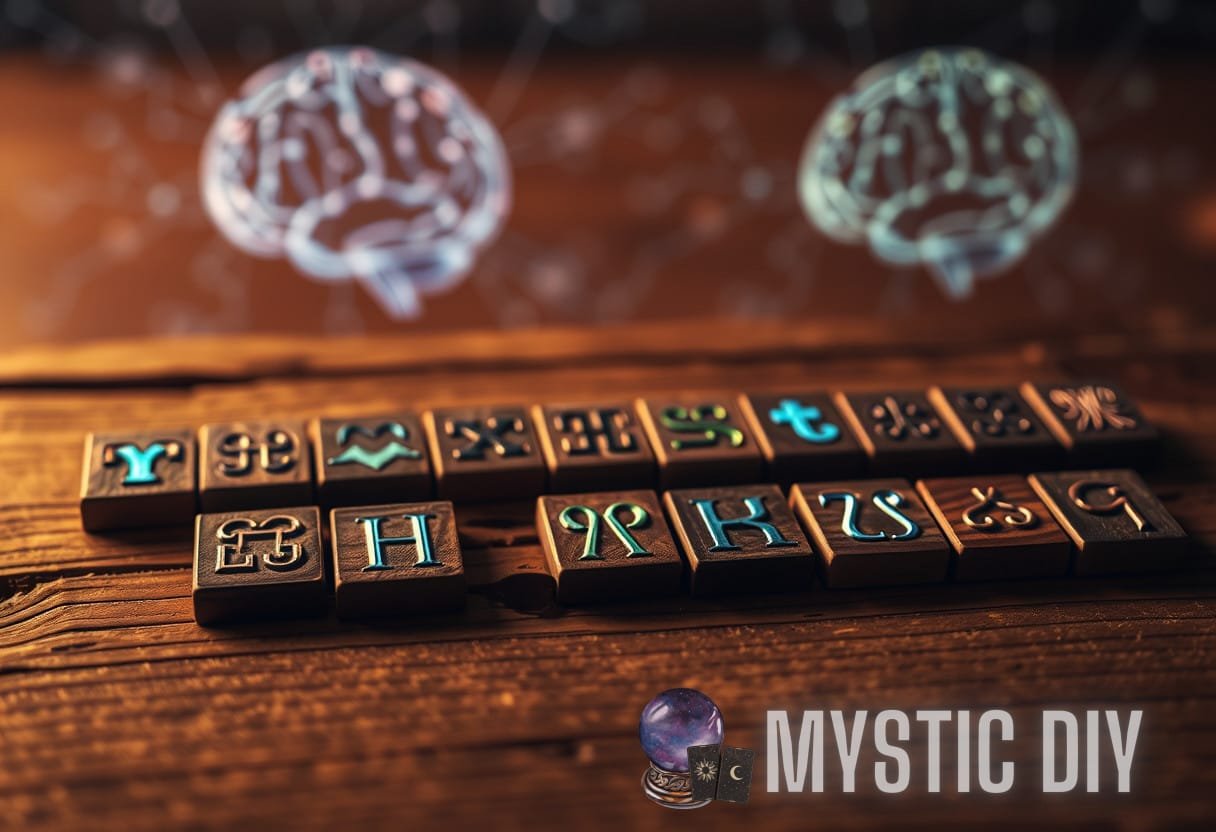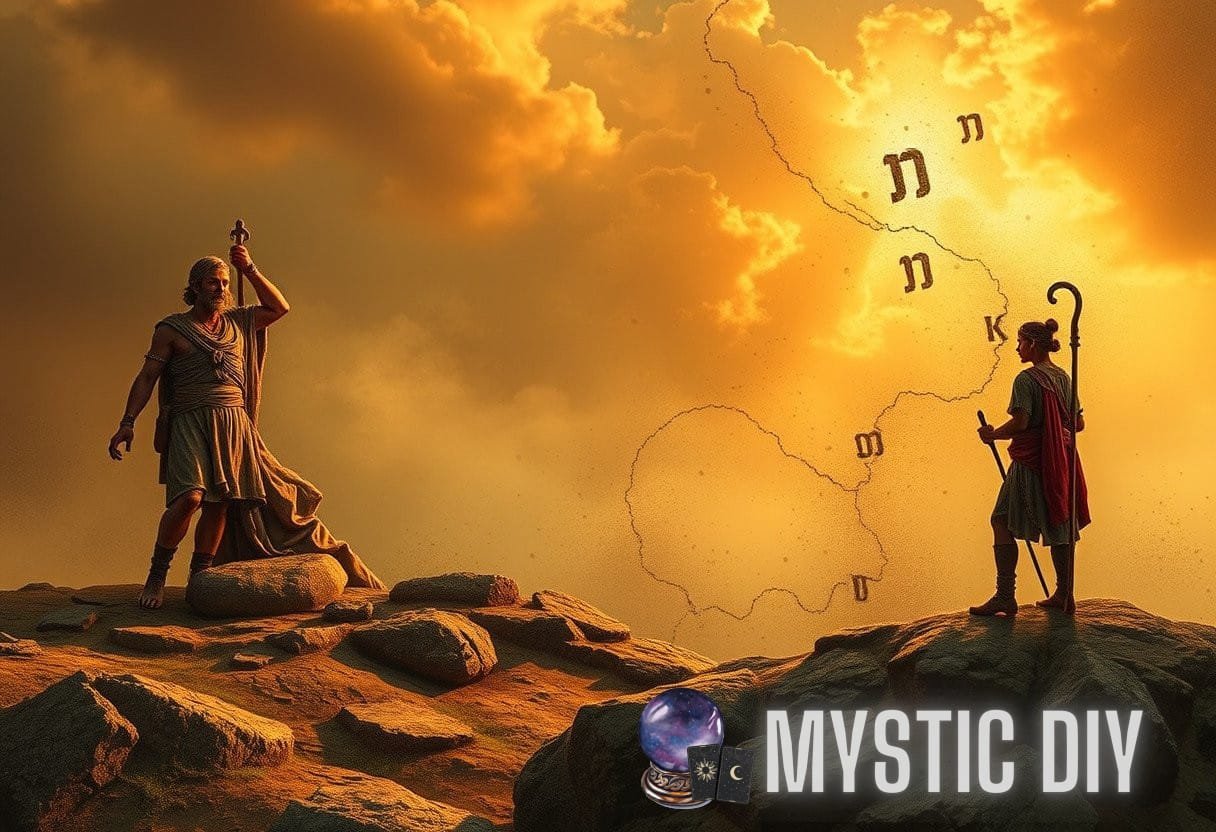Rune Resonance: Investigating the Intersection of Ancient Symbols and Modern Cognitive Processes
The study of runes, historically regarded as mystical symbols, has seen a resurgence in interest amidst modern scientific inquiry. These ancient symbols, which date back to the Germanic tribes of Northern Europe, are not merely relics of the past; they represent a fascinating intersection between culture, language, and cognitive processes.
The Origins of Runes
Runes are characters from various early Germanic alphabets, primarily the Elder Futhark, which emerged around the 2nd to 3rd centuries AD. Each rune signifies not only a phonetic letter but also carries rich symbolic meanings and associations, which were believed to influence various aspects of life.
- Wunjo (ᚹ) – Joy and harmony in relationships.
- Raido (ᚱ) – Travel, movement, and rhythm of life.
- Algiz (ᛉ) – Protection and defense.
Researchers have uncovered that ancient runes were often used in divination practices and rituals, serving as tools to align individuals with the cosmos. Understanding these symbols is paramount in exploring their modern implications through modern rune cognition.
The Role of Symbols in Cognitive Processes
Symbols, by their nature, act as representations that facilitate cognitive processes. Cognitive science explores how individuals interpret and create meaning from symbols, bridging the gap between external world phenomena and internal cognitive states. Notably, studies have shown that when individuals engage with symbols, their brains activate regions linked to memory and associations, thereby deepening their understanding.
In the context of modern rune cognition, this interaction brings forth vital inquiries: How does associating with runes influence cognitive processes? What implications can be drawn regarding perception, memory, and the cultural significance of symbols?
Modern Interpretations of Runes
With the revival of interest in ancient traditions, modern practitioners harness the power of runes beyond historical fascination—they use these symbols for personal development, healing, and spiritual growth. Modern rune cognition indicates that engaging with runes can enhance self-awareness and emotional resilience.
Psychological Studies: Recent studies suggest that the act of “casting” runes in a meditative context can assist individuals in accessing deeper emotional states and fostering mindfulness. This engagement with ancient symbols can stimulate neural pathways associated with introspection and self-efficacy.
The Intersection of Runes and Technology
In our digital age, the study of runes is widening through online resources and apps that encourage users to explore their meanings and applications. Platforms such as Rune Reading provide insights into the significance of runes while allowing users to delve into the psychological impact of their use. This accessibility is creating a shift in how people engage with ancient symbols in a modern context, thereby enhancing modern rune cognition.
- Digital Platforms: Many applications now facilitate rune interpretations through interactive casting, allowing individuals to apply ancient wisdom within their contemporary lives.
- Online Communities: Social media groups and forums promote discussions around rune practices, sharing interpretations, and personal experiences, establishing a collective understanding that enriches modern rune cognition.
Case Studies in Rune Application
Exploring real-world examples helps elucidate the practical impact of rune engagement. For instance, a study published in the Journal of Modern Psychology observed participants who regularly engaged with runes for guidance. The findings revealed enhanced coping mechanisms and decision-making skills.
Another illustrative case focuses on individuals utilizing runes during therapy sessions. These practitioners employed runes to stimulate dialogue and reflection, fostering a therapeutic environment that allowed clients to express their feelings and navigate complex emotions.
Neuroscientific Perspectives on Runes
Understanding how the brain processes symbols has revealed fascinating links between runes and cognitive function. Neuroimaging studies indicate that engaging with meaningful symbols activates brain areas associated with language, emotion, and memory.

- Symbolic Representation: The association of runes with specific personal meanings can enhance neural connectivity, impacting how individuals process emotions and thoughts.
- Memory Encoding: The context and ritual surrounding rune use can lead to enhanced memory encoding, suggesting a significant role in long-term memory retention.
This neurological engagement signifies a robust relationship between ancient symbols and modern cognitive frameworks, supporting the notion of modern rune cognition.
The Cultural Impact of Runes
As humanity grows increasingly technocratic, the integration of ancient symbols provides a counterbalance that emphasizes emotional and spiritual well-being. Runes, embedding cultural narratives and historical significance, are pivotal in enriching personal and societal identity.
Practitioners and enthusiasts report that engaging with runes creates a sense of connection to history, culture, and collective consciousness, thereby reinforcing individual identity within a complex world.
Educational Applications of Runes
As educational tools, runes can foster learning experiences that promote creativity, critical thinking, and intercultural understanding. They can serve as objects that incite discussion about historical contexts, linguistics, and symbolism.
- Art and Literature: Incorporating runes in creative writing and art projects helps students explore themes of culture and identity.
- Historical Analysis: Runes provide rich material for historical analysis, prompting students to examine the evolution of language and cultural evolution.
Thus, the educational integration of runes enriches learning experiences and deepens understanding of modern rune cognition.
Practical Exercises for Modern Rune Cognition
Engaging with runes can be an enriching experience. Below are practical exercises designed to enhance modern rune cognition:
- Daily Rune Reflection: Draw a rune each day, reflect on its significance, and integrate its meaning into your daily activities.
- Rune Meditation: Utilize meditative practices focusing on a chosen rune to cultivate mindfulness and enhance emotional well-being.
- Journaling: Engage in journaling about your connections with specific runes, observing how they influence your thoughts and feelings.
Such exercises facilitate deep cognitive engagement with runes, reinforcing their relevance in contemporary settings.
Future Directions in Rune Research
As the study of runes continues to intertwine with cognitive science, future research avenues are ripe for exploration. Potential directions include:
- Longitudinal Studies: Investigating the long-term impact of rune engagement on mental health and cognitive functioning.
- Cross-Cultural Comparisons: Examining the use and understanding of symbols across different cultures and their cognitive effects.
- Interdisciplinary Approaches: Collaborations among psychologists, historians, and linguists to develop a holistic understanding of symbols and cognition.
Investing in such areas will undoubtedly yield profound insights into the relevance of ancient runes in modern cognitive processes.


